- Home
- Tony Hillerman
Seldom Disappointed: A Memoir Page 21
Seldom Disappointed: A Memoir Read online
Page 21
There were other such aplenty, but the situation in the autumn of 1952 gave tyro political reporters such as myself scant time to enjoy them. New Mexico’s Democratic Party, dominant since the rise of the New Deal, was in shambles. A Republican sat in the governor’s office, a bunch of Young Turk idealists had ousted the good old boys from control of the legislature, an honest fellow had been put in charge of the state police, and grand juries were at work in a half-dozen counties. All this disorder had been triggered by what a lot of people believe was a sort of semiaccidental death.
The victim was Cricket Coogler, a pretty seventeen-year-old Las Cruces brunette, who worked as a waitress and liked to party. Cricket disappeared one night. Time passed. Rumors reached across the Texas border to the El Paso Herald Post. It assigned a reporter to check. The sheriff announces foul play is feared and a suspect was being sought. Easter morning, boys hunting rabbits see Cricket Coogler’s pale hand reaching out of the earth.
The covering of Cricket’s body has been casual indeed—a bit of sand kicked over her corpse where she was dumped. But the cover-up of the crime was intense and so was the public reaction.
A half century of decaying American moral standards makes that reaction and its effect hard to believe today. Now the disappearance of a teenaged waitress wouldn’t rate a mention. The discovery of the corpse might get three paragraphs on an inside page. Our insane “War on Drugs” has made murder a casual everyday affair. But even in those more civilized days the reaction to the death of Cricket Coogler was remarkable. I believe the careless discarding of the corpse touched a nerve—illustrated a sort of arrogance beyond human decency. The Beast was out of its cage in New Mexico. The common folk who had tolerated blatant violation of gambling and prostitution laws and open public corruption revolted. I don’t remember the sequence, and doubt if it matters. (Who knows who initiated the mob that stormed the Bastille?) Rumors spread that a very prominent Democratic office holder was the killer and that the sheriff, who was also the county’s political czar, had personally wiped out the tracks left by those who had discarded Cricket’s body.
The Herald Post reporter, Walt Finlay, learned Cricket’s body had been taken from its desert resting place to Las Cruces. There, after the sheriff’s coroner declared she had been raped, the sheriff had her buried without funeral or autopsy. A clamor for a grand jury arose, was ignored by the district judge and the district attorney, but action was forced by the petition of citizens. The grand jurors decided the sheriff and the district attorney were stalling and made legal history by firing the DA and hiring their own counsel. They ordered the body exhumed for an autopsy, and discovered police had brought in bags of quick lime and buried Cricket in that, thus making the autopsy futile.
The heat increased. The state police chief came down from Santa Fe and took over the cover-up. Word leaks out that a Pittsburgh Steeler running back was locked away in jail as a suspect. The Herald Post reporter stalks into the jail, pretending to be an attorney, finds the halfback, and reports his alibi. He is released. A black U.S. Army artillery veteran, employed at a Las Cruces car wash, is then arrested as a replacement suspect. A social worker has reported that the sheriff has been checking young girls out of the state’s orphanage to work in bars and for other less savory purposes. The new suspect has been taken to the place when Cricket’s body was dumped by the state police chief, the sheriff, and other officers. A bicycle lock has been closed over his testicles and twisted while he is urged to confess. He refuses. Two of the state policeman balk at the torture and walk away. The suspect, badly swollen, is returned to his cell. The word of what has happened reaches the grand jury. Meanwhile a county constable makes a freelance raid on one of the more notorious gambling dens, the operator of which calls for help. Sheriff’s deputies arrive, arrest the constable, replace the slot machines he has seized to their former positions, and haul the constable away with a warning. A grand jury indicts the sheriff for his alleged misusing of orphan girls. A friendly judge tosses out the indictment and reinstates him as sheriff. In Santa Fe the chief justice of the supreme court creates a precedent in U.S. legal jurisprudence with an order that, in effect, creates martial law in Dona Ana County. Another justice is sent to Las Cruces to oversee law enforcement. The sheriff, accompanied by a deputy, walks into Walt Finlay’s room at the Amador Hotel (in tune with its name [“Lover”] the Amador substituted girls’ names for room numbers and the doors were sans locks). The sheriff points his revolver at the reporter’s head and says he has decided to kill him. The reporter tells the sheriff that would be a mistake, because he is just an inexperienced beginner and if he is killed the Herald Post will send up a team of experienced investigators. The sheriff sees the wisdom of this, agrees, reholsters his pistol, and walks out. Meanwhile, the grand jury decides to take the law into its own hands, summons suspected cops into the jury room, locks them in under guard, and makes the rounds shutting down various illegal operations. A federal grand jury is called and makes more history by indicting the sheriff, state police chief, and a DA’s investigator for violating the civil rights of the black suspect. All three were convicted and sentenced to prison.
The center is no longer holding. Things are coming apart. Bugsy Siegel’s agents are no longer making offers on Santa Fe real estate as casino sites. Two bag men, both policemen, making their collections at a gambling den, disagree over who gets what and one kills the other. When no charges are filed, the New Mexican discovers that the records show the shooter is serving a term in the state prison for a previous homicide. The warden had “given him a leave.” The district attorney is asked why the policeman wasn’t being tried for this new homicide. The DA says the case has been “settled out of court.”
By the time I reached the scene all this was last year’s news and I witness only the aftershocks of the earthquake.
For the first time in decades, overwhelmingly Democratic New Mexico had elected a Republican governor, who had campaigned promising to solve the Cricket Coogler murder case. He didn’t, nor has anyone else, but the good old boys had lost control of the legislature as well as the state house. The revolution was over but lots of the old gang remained in state and county public offices and grand juries still labored here and there. For me, a young fellow who wanted to be a political reporter, it was the Promised Land.
As “New Mexico Manager” of United Press (with a staff of one man to manage), I was responsible for covering this scene. The one I managed was Jack Bacon, smart and fast but with only about six months of New Mexico experience and a few months newspapering elsewhere. Jack and I were competing against six Associated Press reporters and, since the AP is a cooperative, the staffs of their member newspapers. How’d we do? Well, since I’m writing this, I’d say we did all right.
The situation in Oklahoma had been vastly different. There most of the newspapers and radio stations (TV was not yet a factor) were UP clients. The AP flagship, the Daily Oklahoman, was a sort of journalistic dinosaur—dedicated to keeping the state “dry” with its liquor prohibition law, killing off labor unions, and doing battle with what was left in the 1950s of the state’s old tradition of political liberalism. Thus while AP and UP staffing was roughly equal, Carter Bradley was the Michael Jordan of Oklahoma and a lot of journalistic sentiment around the state leaned in our favor. On the other hand the UP was a newcomer in New Mexico, a weak underdog service providing news mostly to radio stations and a little chain of small-town papers put together by Lincoln O’Brien, a handsome and urbane New Englander.
Mr. O’Brien occupied a corner suite in what we called the Chief Wrong Font Buildings. Bacon and I, our three teletype machines, one desk, one typewriter, two chairs, and a filing cabinet were crowded into the tiny adjoining room with its never-washed window looking out at the statue of a huge Art-Deco Indian carving petroglyphs into a slab. (His Wrong Font name came from that most common of typographical errors in which, for example, a word printed in italic type is defaced by a letter from the wrong font,
“sUcH aS thIs.” The rest of our half of this Wrong Font building was occupied by radio station KTRC, an appropriately different voice for the City Different. The other building was filled by the New Mexican, a newspaper noted for the typographical errors that gave our Indian his name.
The contract our union had with United Press provided that Bacon worked a forty-hour week, with time-and-half for overtime. As management, I was paid about $10 a week over union scale, but sans overtime. Bacon opened the bureau about 6 A.M., phone-checked the state police dispatcher and other key sources for ongoing news, scanned the morning edition of the Albuquerque Journal, and punched the day’s first radio news roundup into teletype tape—sending it on its way into our radio client studios as he wrote. This system of writing allowed no errors (more accurately, no chance to correct them). One started a sentence knowing it must end properly. By the time you were punching the seventh word the third word was being typed into the radio station’s broadcast script. Our single typewriter collected dust—there rarely being time to actually write a story, read it for editing, etc. It was an unorthodox way to learn English composition, but it quickly conditioned the brain to manipulate the language and to zip through the stored vocabulary for those nouns and verbs that fit the need without a clutter of modifying adverbs and adjectives.
My day began about 10 A.M. making the rounds at state capital offices. A stop at the highway department to check the commission meeting agenda and troll for gossip and tips, duck into the State Corporation Commission for the same reasons, five minutes in the governor’s office exchanging this and that with The Man or his press secretary (Republicans), and then down the hall to pick up political tips at the office of Secretary of State and Attorney General (all Democrats). So it went. If an office produced news you dialed the bureau number, organizing the information in your head while the telephone rang. Bacon answered with his headset on. I dictated my stories unwritten and unedited as he typed them into tape—sending the word out to the world as he typed.
Since our newspaper clients published for afternoon delivery and the big radio newscasts were at drive-time, the pace slowed after lunch. Time now to check tips. Why were repair crews replacing pavement on the Espanola Highway a month after the contractor finished it? Barracks buildings at Camp Luna, closed down by the Army National Guard, were being hauled away by a private company. Had they been sold? Were bids taken? Where was the money going? (That one led to a grand jury indictment of a general.) Was it true that a shipment of 100,000 cigarette tax stamp stickers was missing? Why were $1,456 of State Racing Commission funds spent last year to pay florist shop bills? Has the Child Welfare Department solved its shortage of foster homes? And so forth. In one’s notebook a dozen such tips and story ideas always waited time to check them. There was never enough time. Most of them died unchecked.
I’d reach the bureau about mid-afternoon, taking over from Bacon, who would be finishing his shift. Then I’d file the radio roundups for evening broadcasts, write the “overnight file” to be on the news desks of papers the following morning, take care of the paperwork, and head for home by about six-thirty. After sundown the friends one made at state police headquarters and other such news centers had your home number written on their desk pad to tip you in event of emergencies.
It wasn’t a job that allowed time for relaxing but anyone who grew up as a daydreamer always finds time to let his imagination take him away. In my case to Stanleyville, the gem city of the Belgian Congo, which was going to be the setting of the great novel I was planning. Even the names are forgotten now, but at mid-century the city and the country were paying the awful price of generations of brutal Belgian colonial exploitation. The Belgians had walked away from the scene of their crimes and left a mix of tribal factions and commercial interests to fight it out. Every combat-trained psychopath who had developed a taste for killing in World War II had a well-paid job awaiting in the mercenary armies fighting for Congo Basin riches. The stately boulevards of Stanleyville were littered with the dead, a ghost city without power, food, or water. The only law, the gun. In other words, the ideal setting for a novel in which I would test the soul of my protagonist. But not now. No time now except to compose scenes in my mind as I trotted back to the bureau from the governor’s office or drove home from work. I wrote one first chapter—my hero standing in the lobby of a posh Stanleyville hotel watching shooting and looting along the boulevard. That’s as far as it went. Neither time nor skill to do it, but lots of talking about it, making Marie very aware that I yearned to be a novelist.
The 1950s had become the 1980s before that book was to be started. Belgian Congo had vanished from maps and from memories. But the urge to write the story remained and humanity never fails to provide killing fields. I moved the plot to Southeast Asia, named the hero Carl “Moon” Mathias, a much-admired rifle squad leader in Charley Company, and called it Finding Moon. It’s the closest I have come to writing a book that satisfied me.
19
Stranger in the Ivory Tower
Bill Barkell, the artistic proofreader of the New Mexican, illustrated my decision to desert journalism for academia with one of his cartoons. I’m sitting in lonely isolation atop an ivory tower typing away. Workers are sawing the base of the tower with a foreman explaining the ivory will be made into piano keys. Barkell’s wit cut close to the bone. The University of New Mexico was in political trouble. In the rhetoric of that Cold War year, it was a “nest of radical liberals and Soviet apologists.” I’ve long suspected the trouble was why I got the job.
UNM President Tom Popejoy had worked his way through college and graduate school and became an administrator of one of Franklin D. Roosevelt’s New Deal programs. Conservatives scorned him and when U.S. Senator Joseph McCarthy was climbing to power attacking the liberal left, like-minded folks in New Mexico joined him. Their targets were professors, not Tom himself, since Popejoy was one of ranch country’s good old boys and as a student had kicked the UNM field goal to defeat Arizona. Nobody was going to believe he was a Stalinist.
I had seen this same paranoia in Oklahoma. There a new law required professors to sign a loyalty oath. While many faculty members, notably those just back from being shot at in Europe and Asia, had protested, academic administrators were as craven then as they are now. Two profs at A&M, the state’s conservative school, resigned in protest. OU, haven of the liberals, lost only a noted botanist, who had to quit because he held a commission in the Royal Canadian Air Force. The RCAF wouldn’t allow him to swear fealty to the United States.
Popejoy was a sort of old-fashioned constitutional patriot and not craven. He got himself invited to address the American Legion convention, a gaggle of right-wingers. He read them a stern lecture on the Bill of Rights and the purpose of the University and told them if they wanted to fire his faculty they would have to get him fired first. That drove the radical right back into its burrow for a bit. I wrote an editorial in the New Mexican hailing Popejoy’s position and his courage. Years later I found out that he’d read it, learned that I had written it, and that the New Mexican was the only voice raised in his support.
I had parted company with the United Press in 1954 and walked across the parking lot behind Chief Wrong Font to become a general assignment and statehouse reporter for the New Mexican. And that requires what we fiction writers call “some flashbacking.”
The UP had made the decision easy. Someone in authority had promised New Mexico clients to open a bureau in Albuquerque, by now the state’s dominant population center. To do this we would operate with one hand (me) in Santa Fe, and one sixty-five miles south operating the Albuquerque office. The situation was impossible. I told my bosses it couldn’t work. They said do it anyway. So I quit. By then Jack Bacon had left to join a Trappist monastery and determine if he was cut out to be a contemplative monk. He had been replaced by Jim Carberry, sent down from the Denver Bureau with a journalism degree, virtually no experience, and an uncanny knack for reporting. While we worked tog
ether only briefly, I must pause here to defend this claim with an example.
I had broken Carberry in on our routine, showed him around a bit, arranged for a relief man to be sent down from Denver to lend a hand, and took a long-delayed vacation. We were five hundred miles away when maximum-security convicts revolted and took control of the prison in Santa Fe. The governor, the warden, and the state police imposed a total news blackout. All the press knew was that hostages had been taken and the rebels controlled the prison hospital. Carberry, a greenhorn stranger in town, was competing with the mobilized forces of the Associated Press, plus reporters of the Albuquerque Journal and the New Mexican—AP member papers. Here’s what he did.
He read through the back files on past prison unrest and noted two troublemaking lifers (call them Dent and Jackson) as likely riot leaders. He found himself an unwatched internal communication telephone, ordered the switchboard to connect him to the prison hospital, told whoever answered to get Dent or Jackson. Jackson came. Carberry identified himself, told Jackson this was his chance to speak to the public. Jackson gave him a rundown on complaints, hostages, number injured, and demands for amnesty and escape vehicles, deadlines, and death threats. Lesser fellows might have been satisfied with this total scoop (a word current then) but not Carberry. After he called it in he tipped off the authorities that someone had been using the internal phone without clearance—thereby assuring the competition couldn’t match his story.

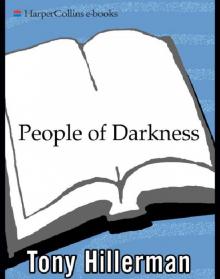 People of Darkness
People of Darkness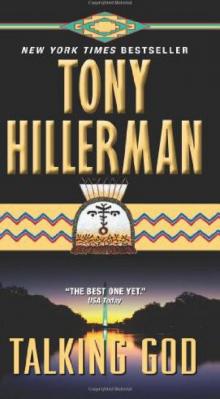 Talking God jlajc-9
Talking God jlajc-9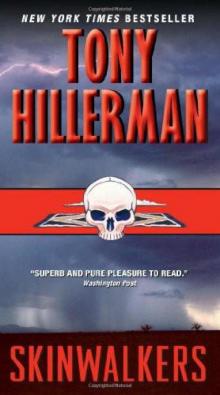 Skinwalkers jlajc-7
Skinwalkers jlajc-7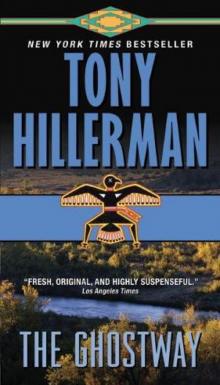 The Ghostway jlajc-6
The Ghostway jlajc-6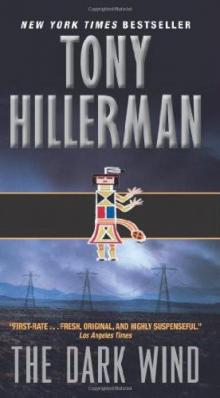 The Dark Wind jlajc-5
The Dark Wind jlajc-5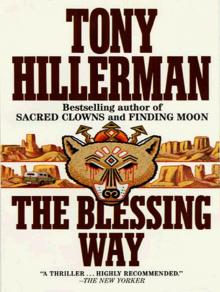 The Blessing Way
The Blessing Way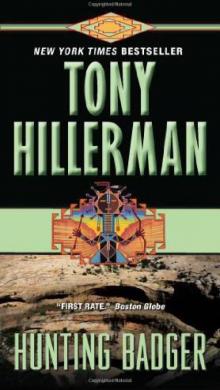 Hunting Badger jlajc-14
Hunting Badger jlajc-14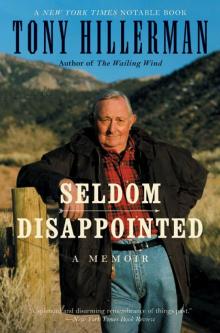 Seldom Disappointed: A Memoir
Seldom Disappointed: A Memoir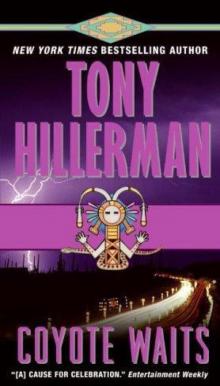 Coyote Waits jlajc-10
Coyote Waits jlajc-10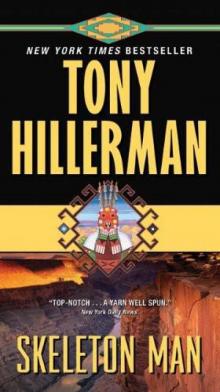 Skeleton Man jlajc-17
Skeleton Man jlajc-17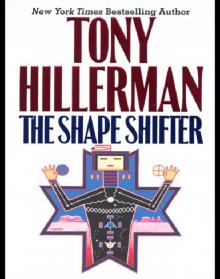 The Shape Shifter
The Shape Shifter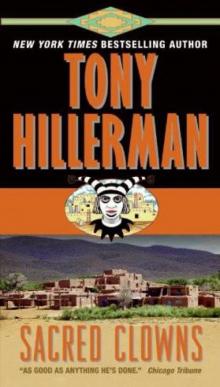 Sacred Clowns jlajc-11
Sacred Clowns jlajc-11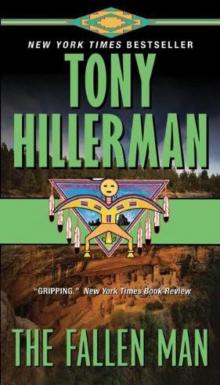 The Fallen Man jlajc-12
The Fallen Man jlajc-12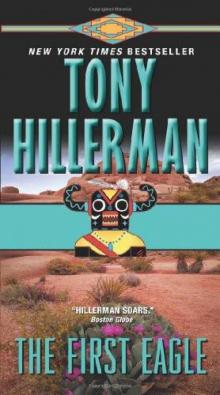 The First Eagle jlajc-13
The First Eagle jlajc-13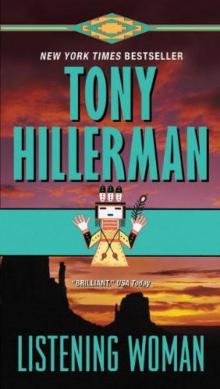 Listening Woman jlajc-3
Listening Woman jlajc-3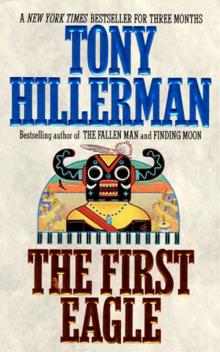 The First Eagle
The First Eagle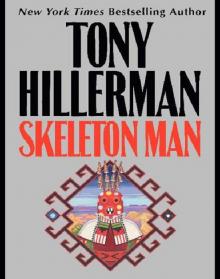 Skeleton Man
Skeleton Man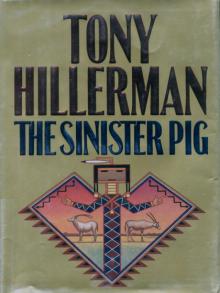 The Sinister Pig jlajc-16
The Sinister Pig jlajc-16 People of Darkness jlajc-4
People of Darkness jlajc-4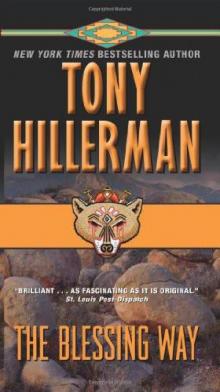 The Blessing Way jlajc-1
The Blessing Way jlajc-1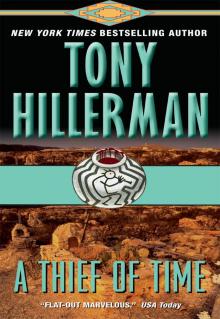 A Thief of Time
A Thief of Time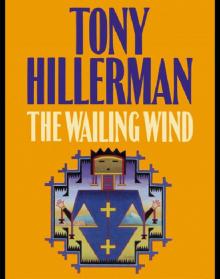 The Wailing Wind
The Wailing Wind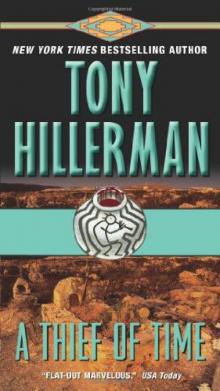 A Thief of Time jlajc-8
A Thief of Time jlajc-8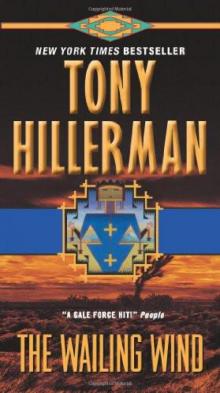 The Wailing Wind jlajc-15
The Wailing Wind jlajc-15 The Shape Shifter jlajc-18
The Shape Shifter jlajc-18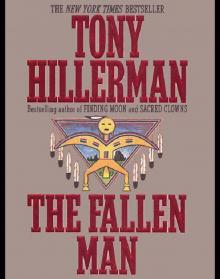 The Fallen Man
The Fallen Man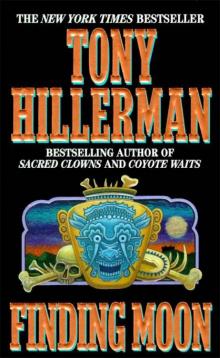 Finding Moon
Finding Moon